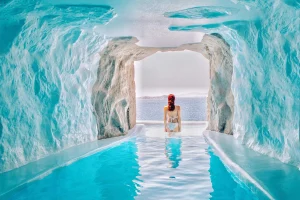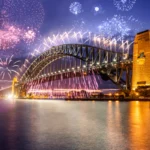ULTIMATE BEACHFRONT CAMPING ON FRASER ISLAND, QUEENSLAND:
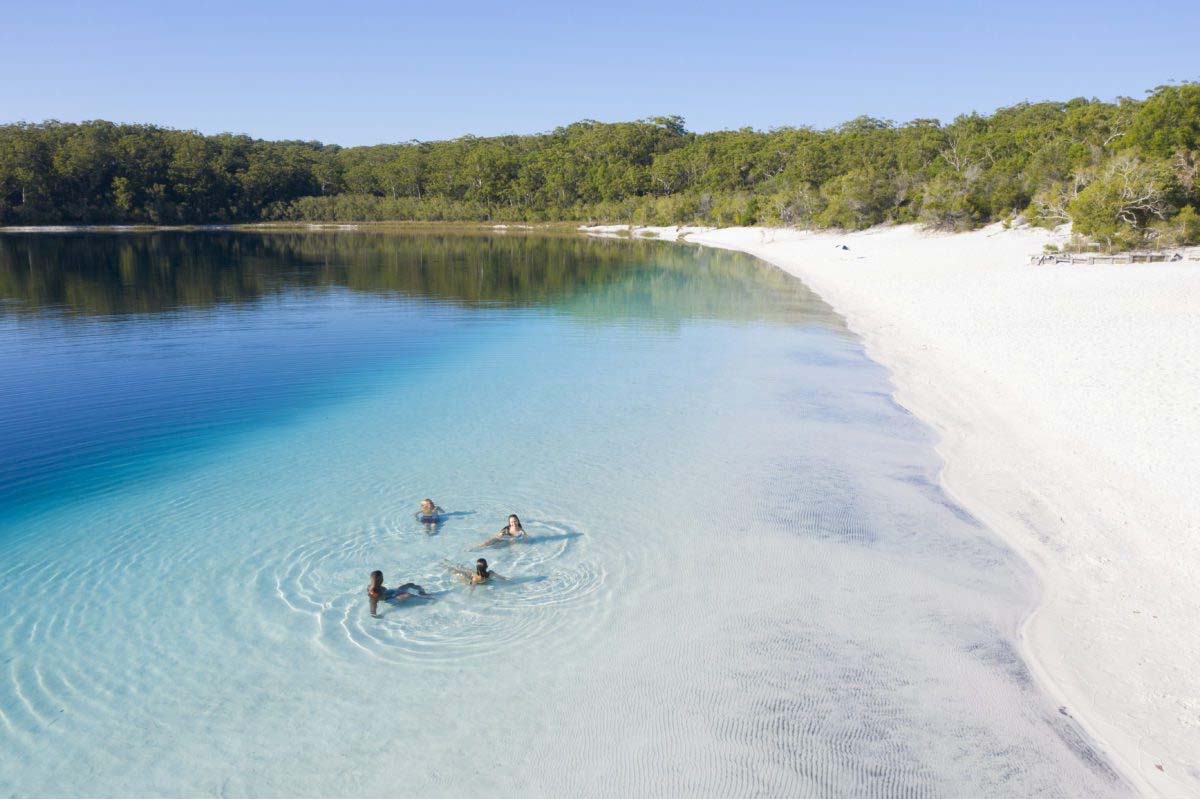
Head to Great Sandy National Park for the ultimate beachfront views along Fraser Island’s eastern shoreline. Choose from nine different designated campsites and pitch your hammock to take in the stress-free scenery.
“Nothing separates you and your campsite from the water other than sand, it’s just magic,” says Hannah Statham, who has travelled to the island for the last decade to camp. She says the 4WD access to the eastern side of Fraser Island attracts people who are “really into camping”, so expect campsites with the works, including portable showers. Apparently, some campers are so keen on their regular spots that they’ll set up ghost tents a week before busy school holiday periods to stake their claim. “Absolute beachfront camping is getting harder to find and the most surprising thing is the price, just $5.95 per person per night compared to $250+ a night at the nearby resorts, with exactly the same views,” says Ms Statham. “You can’t even go to the cinema for that price. Camping here is absolutely stunning and there’s no such thing as a bad spot.”
SERENDIPITOUS SURROUNDS AT LUCKY BAY, WESTERN AUSTRALIA:
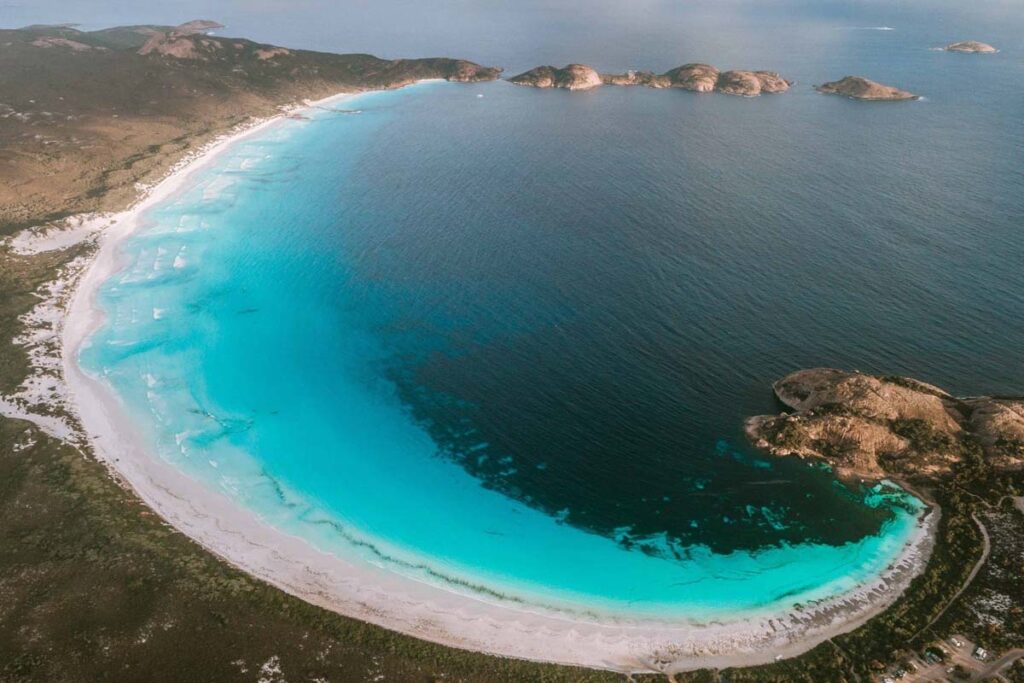
The whitest sand, kangaroos on the beach, turquoise water views and camping within the Cape Le Grand National Park will have you counting your lucky stars in one of Western Australia’s most idyllic camping spots. “It’s hard to go beyond the views of Lucky Bay campsite — they surprise and delight every time,” says Marcus Falconer, CEO of Australia’s Golden Outback.
“A bay of officially the whitest sand in the country, friendly kangaroos and clear blue water overlooked by granite outcrops; it takes your breath away.” A recent upgrade of facilities has increased the number of sites, together with adding toilets, showers and barbecue areas. There’s five kilometres of beach, so tranquillity is only a short stroll away, as are coastal bush walks with views of the many islands, as well as migrating whales at times.
HIGH UP IN THE KOSCIUSZKO NATIONAL PARK, NSW:
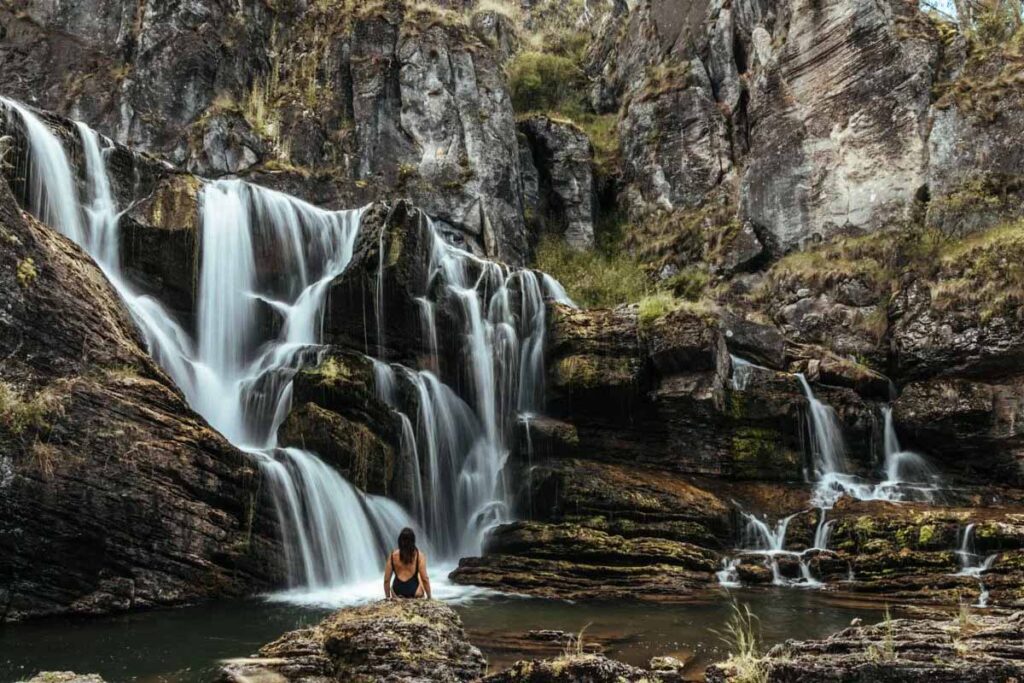
High up on the nation’s rooftop is Main Range in Kosciuszko National Park, where you can stay at Australia’s highest ridge for wild camping in remote wilderness.
“From the main range out to the west the views are breathtaking with ridges as far as the eye can see — you’re truly standing on the roof of Australia,” says Anthony Evans, National Parks and Wildlife Services area manager for Kosciuszko National Park.
“Not many people experience the mountain at night, but seeing the sun set over the ridges is quite unique. It’s like being on the roof of the tallest building in Sydney, but you’re out in nature — it’s spectacular.” Wild camping isn’t for the faint-hearted, but there are historic huts on the mountain for emergencies and you might like to pick up some local Wild Brumby Schnapps to keep you warm in the cold night air, with just the billion stars as entertainment.
CAMPING UNDER A TIN ROOF AND A MILLION STARS, CANBERRA:

At the foothills of the Tidbinbilla Range in natural bush scenery with plentiful wildlife and history is the Nils Desperandum homestead. The camping is back to basics accommodation and an off-the grid experience, with stunning views of the hills and constellations. “We like to say it’s camping without the five-star rating, instead it has a million-star night sky,” says Brett McNamara, area manager of Namadgi National Park. “People don’t associate Canberra with pastoral heritage dating back to the 1880s, so they’re often surprised coming to the rammed earth cottage in the bush capital of Australia. It’s so much more than they expect.” The rustic wilderness experience is on the doorstep of the Tidbinbilla Nature Reserve with its nature-based experiences at The Sanctuary, a large wetlands ecosystem providing viewing opportunities for a range of native animals in a natural setting.
SCENERY WITH SOUL IN THE IKARA FLINDERS RANGES NATIONAL PARK, SOUTH AUSTRALIA:

Wake up in a glamping tent at the Ikara Safari Camp with views to the Wilpena Pound, kangaroos and emus walking past and a sense you’re immersed in Aboriginal culture. In the evening, bask in the moon and star light for clear skies popular with Adelaide-based Backyard Universe, who put on star gazing events in April, September and October. “The views and colours of the Wilpena Pound change from morning to night and the scenery was made famous by the paintings of Sir Hans Heysen,” says Anna Caponi, whose experience in the region dates back twenty years. “It’s such a unique place with spirit where you can view scenery, as well as rock art sites, rocky gorges with endangered yellow-foot rock wallabies, and sometimes experience cultural cookouts to try traditional bush foods. “There’s also world-renowned geological history and impressive fossil remains to see in a region of enormous significance to the Adnyamathanha people, so come back to nature how it used to be.
GREAT OCEAN VIEWS ALONG THE GREAT OCEAN ROAD, VICTORIA:

Imagine waking up on top of a cliff overlooking the stunning Johanna beach, a world-renowned surf break that has played host to the Rip Curl Pro Bells Beach surf contest. Watching the sun rise and set over this view will make the hike to the top worthwhile. There are only eight tent sites at the Johanna Beach Hike-In Campsite as part of the Great Ocean Walk, one of Victoria’s iconic walks stretching 104km from Apollo Bay to the Twelve Apostles. You can also try one of the 25 unpowered campsites at Johanna Beach, where dogs are allowed on leads, so you can take the whole family. Nearby are hikes through the beautiful Great Otway National Park when you tire of the sweeping views of the southern coastline and spectacular surrounds. Just remember, Johanna Beach is unsafe for swimming because of its strong currents, so be happy to view from afar.
WAKE BESIDE A WATERFALL IN DOUGLAS-APSLEY NATIONAL PARK, TASMANIA:
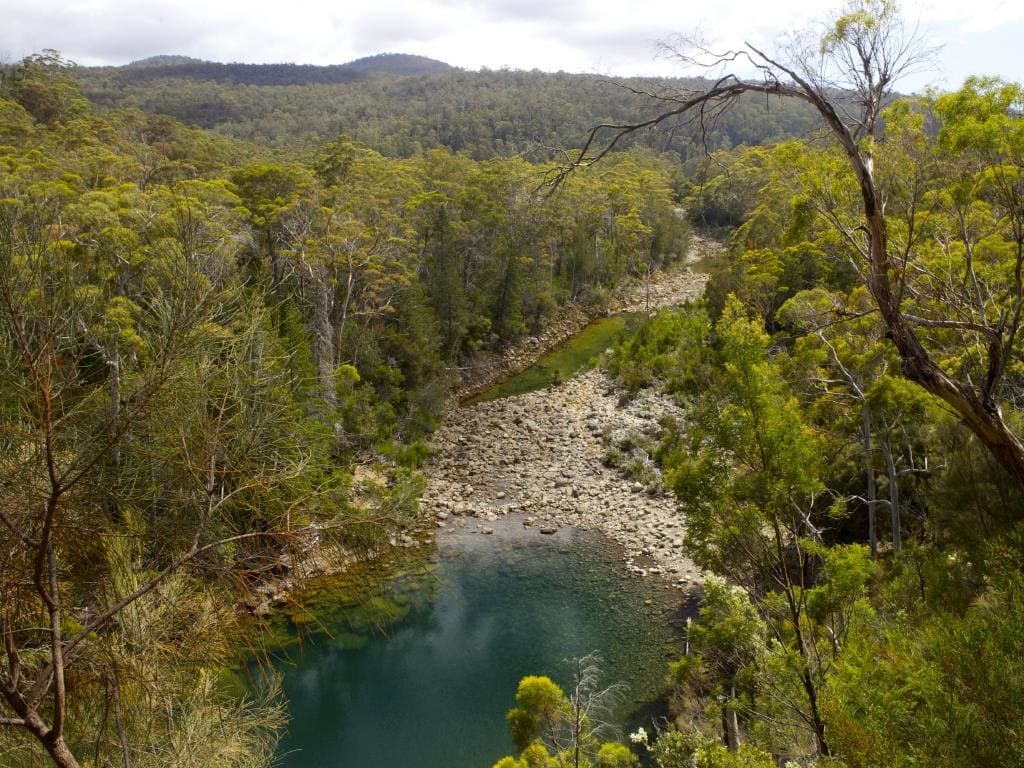
For rugged, raw beauty you can’t go past Tasmania’s Douglas-Apsley National Park with secluded waterfalls, wildlife and wildflowers, as well as freshwater pools shaded by eucalypt forest. The Douglas-Apsley waterhole bush campsite has spectacular views to fill the frame of your tent as you peak out in the morning light. Afterwards, head out for more stunning views from platforms overlooking awe-inspiring gorges and heathland. Located on Tasmania’s East Coast, the Douglas-Apsley National Park has one of the last uncleared forests in the state, with plenty of farming and mining history to explore with it.








